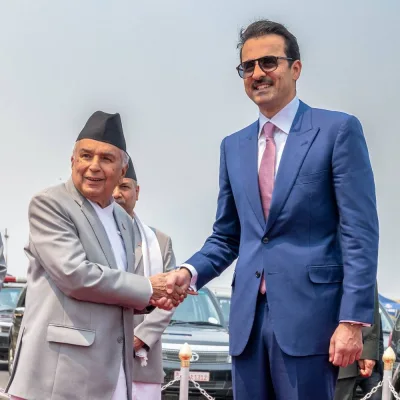|
Nepal’s prime minister has pledged to set up a weather warning system after a major Himalayan snowstorm killed 32 people at the height of the trekking season, 17 of them tourists. |
Forecasters had predicted the snowstorm, but many hikers appeared to have been caught unawares and were heading to an exposed high mountain pass that forms part of the popular Annapurna Circuit trekking route when it struck.
Nepal’s Prime Minister Sushil Koirala said the loss of life was “extremely tragic at a time when worldwide weather updates are available every second” and pledged to provide better weather
information in tourist areas.
“I want to assure that the government will make efforts to establish early warning centres for weather in the important spots across the country, especially in the Himalayan areas and along rivers,” he said in a statement on Thursday.
Yesterday, emergency workers on foot and in helicopters resumed their search for survivors, rescuing 48 more people, including at least 14 tourists, a day after they airlifted more than 150 to safety, officials said.
“We have located 41 people who were stranded at the Thorong La pass, including at least a dozen foreigners,” said Bishnu Bhattarai, an official at the Trekking Agencies’ Association of Nepal (TAAN), an
industry body.
Workers had earlier rescued seven others, including two French tourists.
Thousands of people head to the Annapurna region every October, when weather conditions are usually clear.
The Annapurna Circuit is particularly popular among tourists, and has come to be known as the “apple pie” trek for the food served at the small lodges, known as teahouses, that line the route.
But many were unprepared for the conditions on the Thorong La pass, which bore the brunt of Tuesday’s unseasonal snowstorm.
Eighteen-year-old trekker Max Weinstein said that hotel staff had told him and a fellow hiker that it was “totally safe” to head up to the pass, which climbs over 5,000m (around 16,000ft).
Some industry veterans said trekking companies could have done more to ensure clients’ safety.
Tashi Sherpa, director of Seven Summit Treks, insisted that four dozen clients postpone their trek up the Annapurna circuit, likely saving their lives.
“We had been checking weather and we saw that the days ahead were not clear...it is basically because of experience that we take such precautions,” Sherpa said.
“We always plan ahead, check the weather, brief our clients. We map out help, hotels, mobile network access for them,” he said.
He added that a lack of regulation allowed companies to take chances with client safety, with the added complication that many trekkers insist on ignoring warnings and forging ahead.
Emergency workers yesterday recovered the body of a Nepalese porter from under the ice, taking the toll from the disaster to 32, including 24 trekkers on the Annapurna circuit and five climbers on a mountain in the area.
Local official Tulsiram Bhandari said that the bodies of the two Slovakian mountaineers and their three Nepalese guides, killed when an avalanche struck the base camp of the 8,167m (26,795ft) Mount Dhaulagiri, had now been found.
It was unclear how many people remained stranded in the area yesterday, although the majority are now thought to have been accounted for.
In all, 168 foreign tourists had registered to trek there, but that number does not include their Nepalese guides and porters.
It is one of Nepal’s worst trekking disasters since 1995 when a huge avalanche struck the camp of a Japanese trekking group in the Mount Everest region, killing 42 people including 13 Japanese.
Some tourists in Kathmandu said they would wait for the search operations to conclude before going ahead with their hikes in the Annapurna region, but for others, the scale of the disaster has prompted a rethink.
Anna Solander, a 21-year-old student from Sweden who was set to embark on her first trek in the Himalayas next week, said she felt “really uncomfortable” after hearing about the
snowstorm.
“I looked it up and it sort of freaked me out a little bit because I don’t know anything about trekking,” Solander said in Kathmandu.
“I didn’t even know that trekking was like dangerous, I thought it was only dangerous if you go for Everest or something,” she said.
Impoverished Nepal relies heavily on tourism revenues from climbing and trekking.
It has suffered multiple avalanches this year, with 16 guides killed in April in the deadliest accident to hit Mount Everest, forcing an unprecedented shutdown of the world’s highest peak.



